Designing for Wellbeing: 7 Elements of Integrative Health
Nov 26, 2021
As we design for aesthetics, we simultaneously hold powerful tools to design for integrative health. Evidence-based design elements have clearly emerged that cultivate wellness in the physical, emotional, mental, and spiritual realms.
Researchers from the Andrew Weil Center for Integrative Medicine, John Hopkins University, and University of Arizona’s School of Architecture conducted a large scale literature review in designing for integrative health. 162 articles and books were selected for review, culminating in the findings of their recent paper published in the Journal of Building and Environment.

By distilling the literature review, the researchers clearly saw a framework for designing for well being. There were several common findings amongst all the studies, including:
Access to natural lighting
- Designing for circadian rhythms
- Connection to nature (biophilia)
- Indoor air quality
- Spatial layout
- Control over the environment
These evidence-based design elements can be tied into the facets of integrative medicine.
7 Areas of Integrative Medicine
Integrative medicine is defined as “healing-oriented medicine that takes into account the whole person, including all aspects of lifestyle.” There are seven core areas of integrative health, including:
- Sleep
- Resiliency
- Environment
- Movement
- Relationships
- Spirituality
- Nutrition
Taking these concepts of integrative health and applying them to built design will lay the foundation for holistic wellness between people and place. Each integrative medicine area corresponds to a built environment element, as outlined in this figure from the paper:
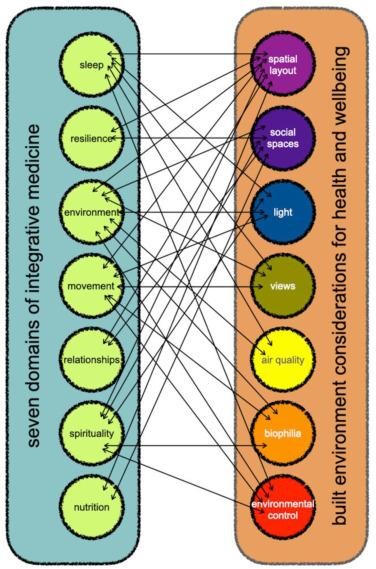
7 Elements of Wellbeing with Evidence-Based Design
Understanding the seven elements of wellbeing and how design fits within each can dramatically improve integrative health.
1. SLEEP
Research shows being exposed to full spectrum sunlight from 8 am to noon will improve your sleep quality and sleep latency (how much time it takes to fall asleep). Sunlight is what activates our brain’s internal circadian clock and sets us up for improved sleep quality in the evening. This sunlight exposure also boosts mood and decreases depression.
Design considerations should allow as much full spectrum circadian sunlight into the space as possible. Panda is known for creating the largest folding and sliding glass doors in the industry, which allow for brilliant sunlight to stream indoors. Our guide on installing oversized sliding glass doors is especially helpful for designing for perfect positioning.
Thoughtful design will also consider furniture placement in relation to streaming sunlight. Keep in mind that monitors need to be placed in a way to avoid glare from doors and windows; glare has been known to trigger the stress response.
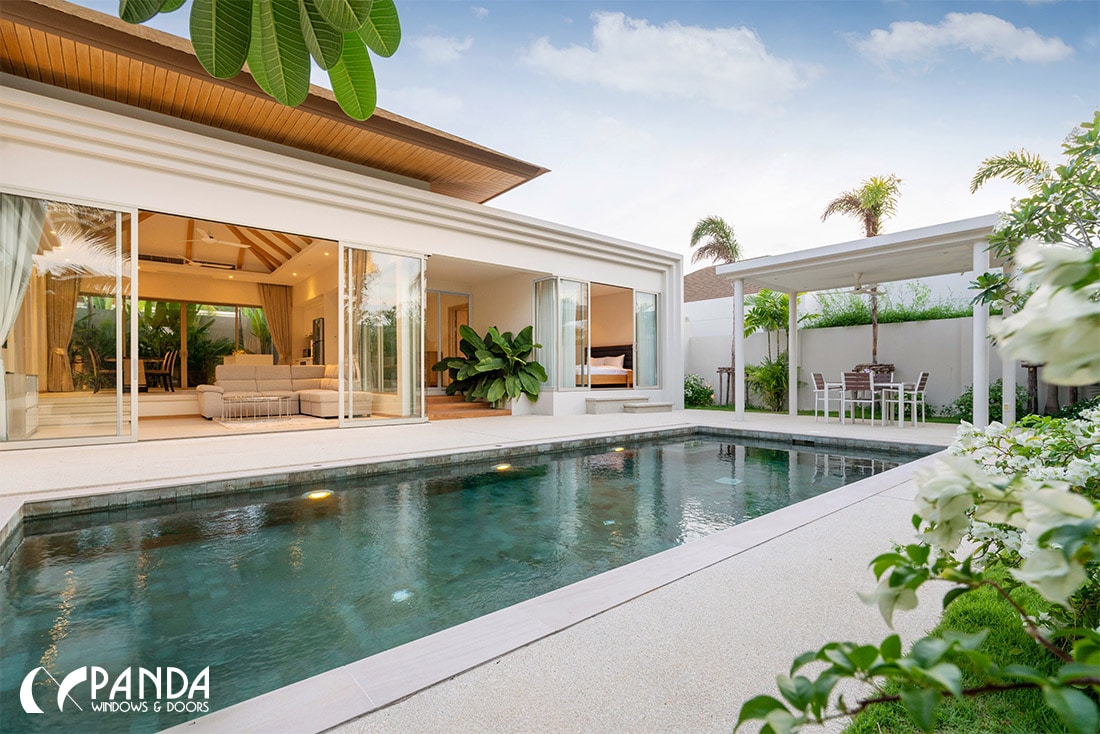
2. RESILIENCE
Resilience is our ability to return to homeostasis, or a state of balance, after environmental exposure. The physical environment has the power to calm or stress. Sound, odors, light, views, thermal comfort, and spatial design are all triggering factors.
Creating an environment that minimizes stress helps maintain resilience. Biophilia, which is literally translated to “love for life,” is designing with nature and wellness in mind. Numerous studies have found that access to nature decreases stress, both subjectively and objectively. In a study of 900+ office workers, those with a forest view reported improved job satisfaction and decreased job stress.
Across the world, workers in offices with live plants and ability to visit green spaces have increased creativity and productivity. In contrast, the lack of greenery increased stress. Even in a virtual reality study, participants exposed to virtual plants had lower measures of stress, as indicated by heart rate and other objective stress response measures.
In a study inside a hospital waiting room, patients experienced less stress if there were real plants or even just posters of plants. Chemo patients shown nature artwork exhibited lowered levels of depression and anxiety, with blues and greens triggering pleasure (while yellows and reds increased anxiety scores, along with respiratory and heart rates).
Nature easily comes inside with Panda’s stunning windows and patio doors. Our innovatively designed TS.XO Multi Slide Doors offer nearly floor to ceiling views. Ultra slim profiles on the slide doors are less than one inch across, creating unobstructed views and incredible clarity. These patio doors are a best friend to biophilic design. In addition, our thermally broken aluminum windows and doors are energy efficient, reducing heat loss in the winter and maintaining a comfortable environment year round.
Incorporating natural, holistic elements in spatial design plays a large role in creating a peaceful environment. In addition to views without obstructions with our sliding patio doors, other design elements include wide corridors and movable, ergonomic furniture.
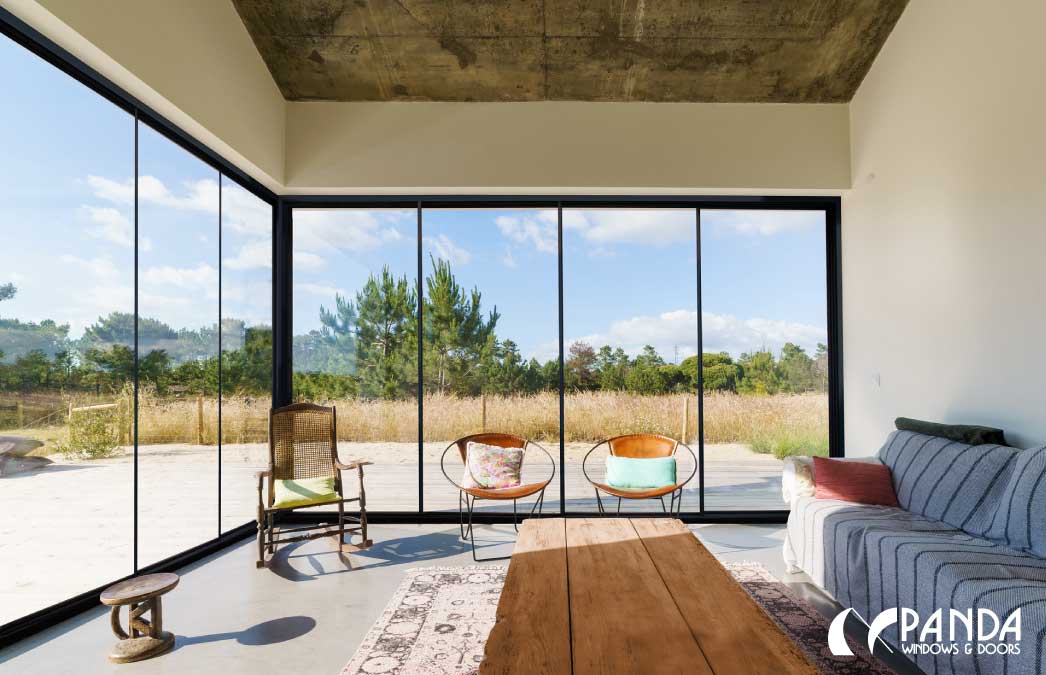
3. ENVIRONMENT
The authors of the study illustrated air quality as the foundation of holistic wellness. Only when we have healthy air can we have a healthy built environment. Healthy air quality is one where pathogens, particulates, VOCs, allergens, and pollutants are removed.
We know that environmental pollutants, including VOCs from offgassing, are harmful for health, especially for fertility and growing fetuses.
Carbon dioxide (CO2) is another major concern. The more people in a poorly ventilated space, the more CO2 will accumulate. Baseline CO2 measurements are usually in 400 parts per million, but levels above 950 will negatively impact cognitive performance by 15%. Should this rise to 1400 ppm, cognitive performance drops by 50%.
Designing a space with healthy ventilation rates and fresh air exchange, especially through Panda’s operable windows and doors that open to the outside. Our sliding glass allows for fresh air exchange, boosting air quality and reducing CO2 levels.
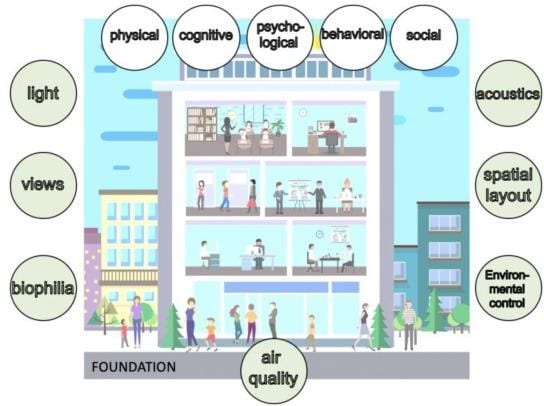
4. MOVEMENT
Humans were not made to be sedentary, yet the average office worker has been spending a shocking 15 hours per day seated. The Mayo Clinic analyzed 13 studies and found those who sit for more than 8 hours per day without physical activity had similar risks of dying to those of obesity and smoking!
How can an office environment improve movement? In a GSA Wellbuilt for Wellbeing study, employees with open bench seating were 32% more physically active than those inside private offices. The more active workers with open bench seating were also found to have decreased physiological stress after hours (as measured by heart rate variability).
Spatial design indeed shapes behavior, which influences health. Based on these study results, GSA has itself created a flexible workspace design with open bench seating. Other private companies have also embraced open office design, which creates varying spatial layouts that give employees choices in where to work. Small spaces are carved out for individual work that requires concentration and quiet, while flexible meeting spaces are meant to cultivate socializing.
Panda’s Select Series of our most popular doors offer modestly-priced systems that allow for ease of space flexibility. Panda’s Lift and Slide door design can be arranged in different ways to allow for full flexibility and stunning architectural style. Our Lift and Slide Door also fully articulates with the lift of one finger!
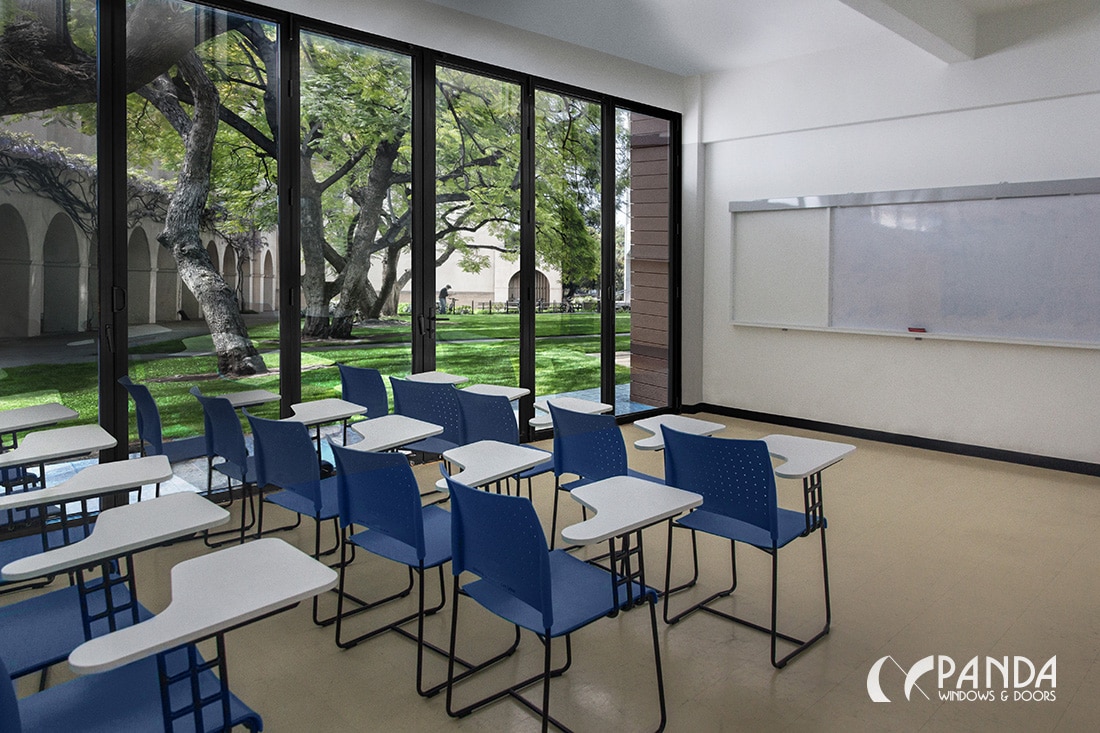
5. RELATIONSHIPS
As seen in many studies, relationships play an imperative role in physical and psychological health, as well as longer lifespans. In contrast, social isolation has been associated with earlier mortality.
Those who have more positive social interactions have fewer and less severe viral infections. This is especially interesting in the light of COVID.
Applying this understanding to design, creating spaces that encourage social interactions will improve wellness on every level. Are there spaces to gather? Places to enjoy healthy food together? Can conference rooms and furniture be configured for different sizes of groups?
Of course, with open layout design, there are concerns of visual and auditory distractions. Acoustic panels and carpeting can help with sound, as can Panda’s moveable glass walls that allow for easily configurable spaces and privacy when needed. Plants are also a great way to facilitate visual masking while incorporating more biophilia.
6. SPIRITUALITY
Spirituality is an important component to holistic health. Meditation and prayer have been shown to activate the neural pathways that improve mood, decrease stress, and boost resilience. Deep breathing activates the vagus nerve, which activates the “relaxation response” that halts the stress response.
Designing a space to encourage spirituality and stillness has tremendous wellbeing benefits. Creating a place for peaceful contemplation with elements of nature, even if it is a corner by a window, will boost spiritual health. Mindful meditation activates the areas of the brain that release dopamine, as well as endorphins that reduce pain.
Research has found labyrinths reduce stress, increase relaxation, and provide coping tools for managing challenges. Since ancient times, this nonlinear but specified path has been found to induce meditation, improve relaxation, and minimize stress.
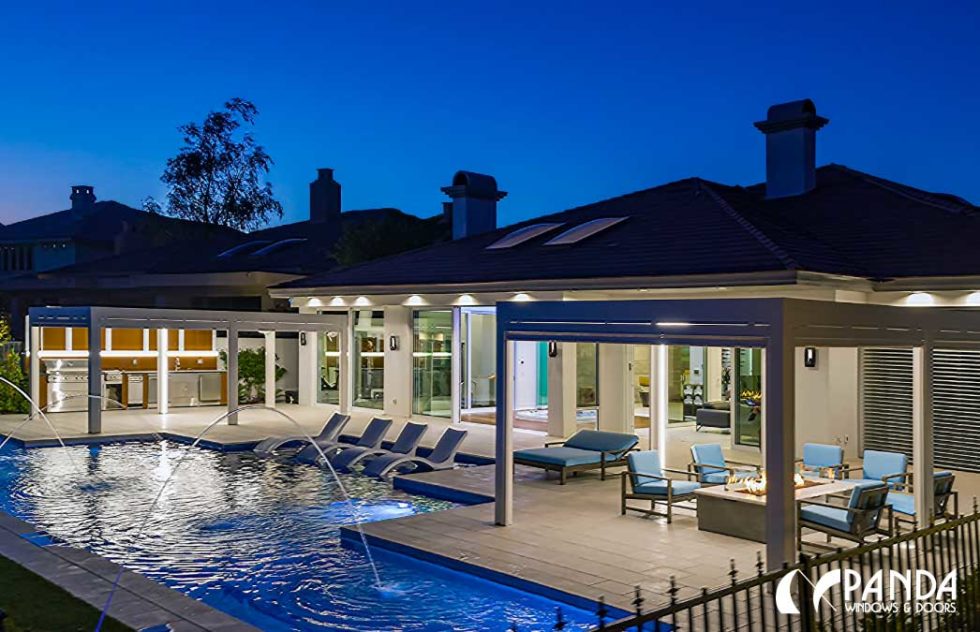
7. NUTRITION
The importance of nutrition to wellness is clear. For design considerations, are there spaces that allow for easy access to healthy snacks? These areas not only improve nutrition, but become important gathering spaces for strengthening social bonds as well.
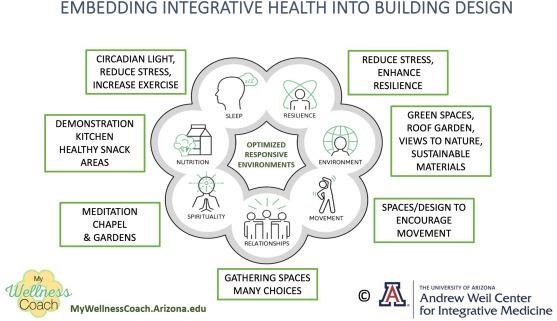
Post COVID Considerations
COVID has placed the spotlight on designing spaces for integrative health. Biophilia design that accounts for views of nature and circadian light, encouragement of movement, and spaces for quiet contemplation and good nutrition are now “recognized as more important than ever before,” according to the study’s authors.
At the forefront is good indoor air quality that prevents infections from spreading through ventilation. However, just as important is designing an environment that minimizes stress. Chronic stress has been shown to be associated with greater severity and frequency of viral infections, as well as lowering vaccine efficacy. Designing for integrative health will “enhance the immune system’s ability to fight infection when exposed, reduce severity of viral infection sequelae if infected, and help increase the efficacy of vaccination,” concluded the study’s authors.
At the onset of the pandemic, there were discussions about changing open office design to avoid viral spread. Research now shows, however, that optimal ventilation is found in flexible, open office design. Smaller, closed private offices with subpar ventilation poses much more risk than a larger, open office with strong air flow. The authors recommended a flexible space that allows for easy reconfiguration of seating and furnishings, which is easily accompanied with our moveable glass walls and windows and doors.
Working from Home
Designing for an ideal office environment for integrative health applies equally to a home office, especially since the pandemic’s onset. A recent TELUS International survey found that 45% of the American workforce reported a decrease in mental health while remotely working from home. 80% of respondents would trade their current jobs to work for an organization that had a stronger emphasis on employee mental health.
Thankfully, a home office can be designed for the seven areas of integrative health. Simply being exposed to nature and circadian light by large windows or sliding patio doors will reduce stress, improve sleep and resilience. Creating a small physical space for meditation is powerful for emotional health.
To review, the common findings for holistic health include:
- Daily exposure to sunlight for improved mood and sleep
- Nature views
- Good nutrition
- Physical movement
- Respectful relationships
- Time for meditation
To design an ideal home office environment, incorporate:
- Natural light exposure
- Good indoor quality
- Nature views and connection
- Calming spatial layouts
- Flexibility in the built environment and social spaces
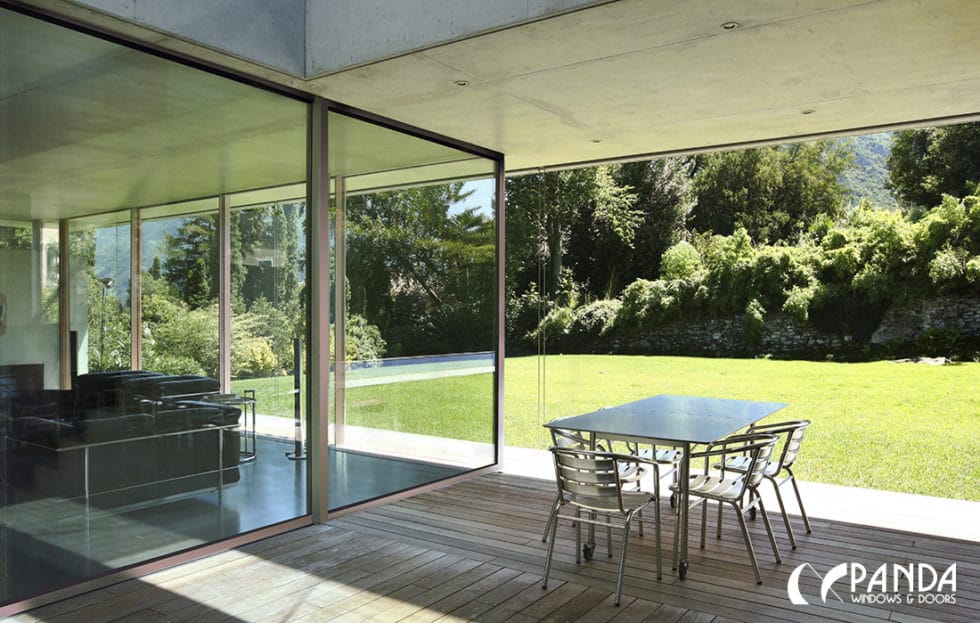
These evidence-based design elements ensure the environment supports our overall wellbeing, minimizes stress, and boosts immunity. Incorporating the seven areas of integrative medicine is especially critical in these times.
In designing your home office, take advantage of our Residential Home Door Options Buying Guide. For commercial spaces, our Commercial Door Options Selection Guide is an excellent resource for choosing the perfect design for your space.
We wish you total wellness!

NanaWall vs Milgard vs Panda Windows and Doors | Costs & Features
Compare the costs and features of NanaWall, Milgard, and Panda Windows and Doors to find the best option for your home’s style and budget!
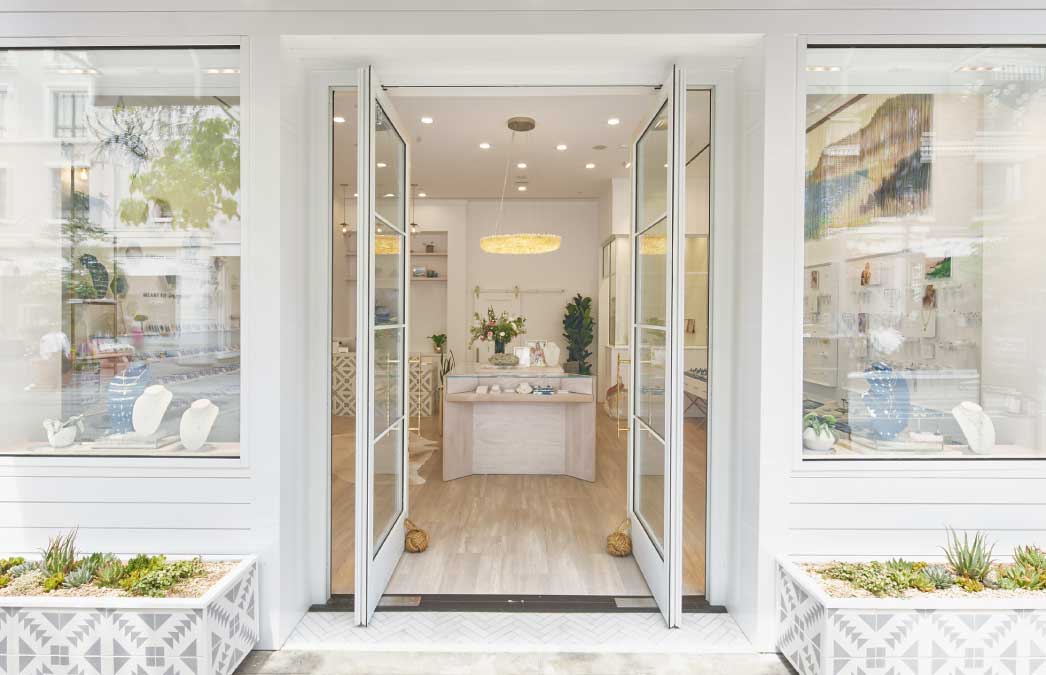
Gas-Filled Glass vs Impact Resistant Glass: Which Is Better?
Find out whether gas-filled glass or impact-resistant glass is better for your home or building’s safety and efficiency in our guide.

Gas-Filled Glass vs Laminated Glass: Which Is Better?
Compare gas-filled glass and laminated glass to see which is better for safety and insulation in our detailed evaluation.











